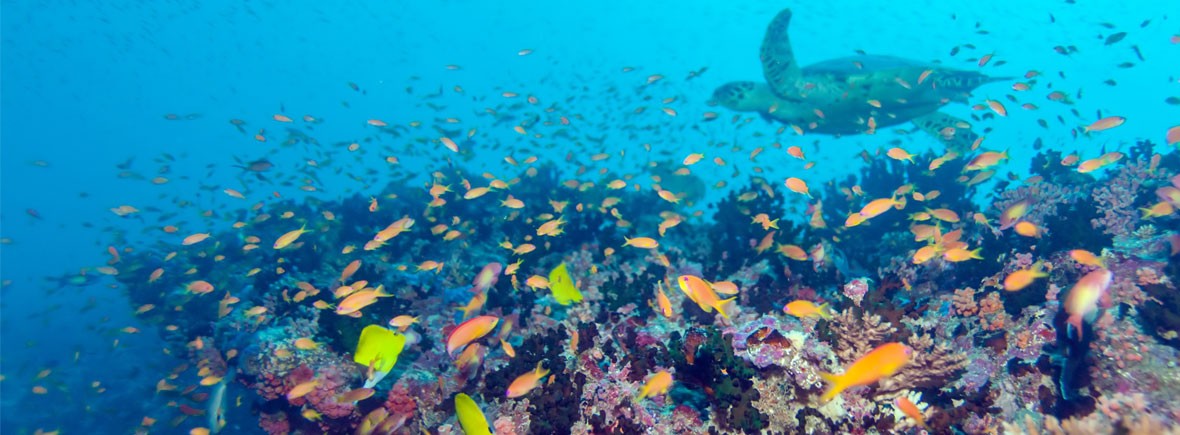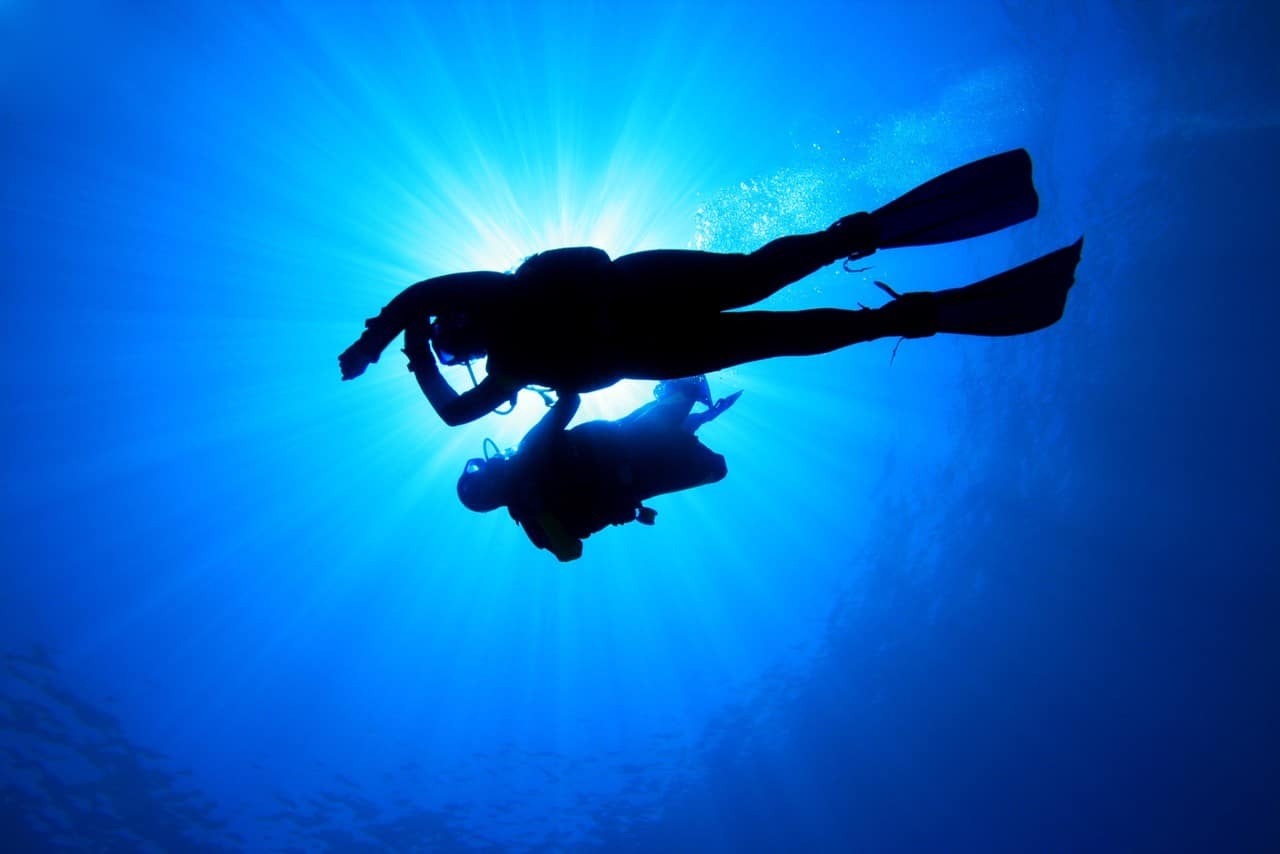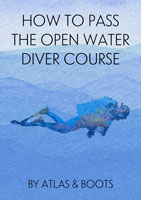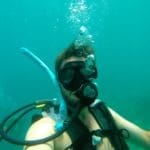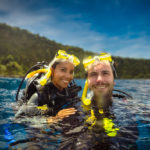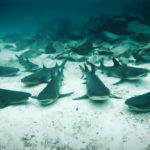In February last year, we arrived in South America after six months island-hopping across the Pacific Ocean. I knew we’d be spending more time on dry land here than we had in Samoa, Tonga and Vanuatu where I passed my PADI Open Water Diver course. Nonetheless, I was keen to improve my diving skills as we were planning to visit the Galápagos Islands with its excellent range of sea life.
We stopped on the Atlantic coast of Colombia for a few days so that Kia could complete her Open Water Diver course. Not wanting to sit around on the beach for three days I decided to complete the PADI Advanced Open Water Diver course at the same time.
It proved to be one of the best decisions of our trip. Many aspects of my diving improved dramatically, particularly my energy and air efficiency. Additionally, my confidence grew, as did my safety awareness. I discovered that with my new skills I could enjoy my time underwater even more. Here’s why it’s worth completing the PADI Advanced Open Water Diver course yourself.
1. You don’t have to be advanced
The first thing to understand is that you don’t have to be “advanced” to take the PADI Advanced Open Water Diver course. The course is designed to build on the skills you learnt in the Open Water Diver course and many divers choose to complete the advanced course immediately after the basic one. This way, their skills and knowledge can be improved without allowing time to develop bad habits.
Others prefer to complete a few intermediate dives to make sure they really enjoy scuba. This prevents them from investing more time and money into a skill they won’t use.
In hindsight, I wish I had completed my advanced course immediately after my basic one back in Vanuatu.
2. hone Navigation skills
There are five dives to complete for the PADI Advanced Open Water Diver course, including two compulsory dives: a deep-water dive and an underwater navigation dive.
During the basic course, you learn some basic navigation skills (swim and navigate with a compass at surface and at depth), but always under the watchful eye of your instructor. The advanced course will build on these skills and ensure that you can navigate more accurately over a longer distance using kick-cycles, visual landmarks and time. In low-visibility water or at night, these skills are indispensable and will help you to safety if you ever lose your buddy or group.
3. Access deeper water
The reality is that the most exciting dive sites are deeper than 18m (60ft) and some require an advanced certification just to dive there at all. In Tonga, a dive company would not allow us to dive some underwater caves without the PADI Advanced Open Water Diver qualification. I listened with envy as an advanced diver told me of his experience there.
The second compulsory dive of a PADI Advanced Open Water Diver course is a deep-water dive to a depth of 30m (100ft). This will open up a whole host of future opportunities and help you understand the effects of deep diving on your body, the gear you use and the environment around you.
4. improve your Buoyancy control
I chose to complete the Peak Performance Buoyancy dive which helped me understand the importance of getting my weighting correct and controlling my breathing. I found that I could control my position in the water largely by using my lungs, so I wasn’t adjusting my BCD so much and wasting air, time and energy doing so.
Most importantly, with practice, I could start to forget about the mechanics of diving and focus more on what I was looking at.
5. improve your Breathing
Until I completed the advanced course, I was always the first to get through my air supply and would frequently have to end my dive before the rest of the group. The advanced dives (particularly the buoyancy control dive) really improved my breathing. When we dived in the Galápagos, my breathing was under control and my air lasted just as long as the rest of group – several of whom were more experienced.
An experienced diver will notice the difference in my breathing between a pre-advanced course dive in Tonga where I’m insistently sucking at the air and a more relaxed and consistent approach post-advanced course in the Galápagos.
6. become a specialist
As mentioned, there are two compulsory dives to complete (navigation and deep diving) and then three other specialist dives of your choice. The specialist dives give you a chance to develop your interests and focus on a certain skillset.
Be aware that not all speciality dives are offered at every dive centre and the choice can also depend on local conditions. The below are commonly offered but do check the PADI website for a comprehensive list.
| Underwater Navigator (compulsory) | Deep Diver (compulsory) |
| Altitude Diver | Peak Performance Buoyancy |
| Boat Diver | Search and Recovery Diver |
| Drift Diver | Underwater Naturalist |
| Underwater Videographer | Underwater Photographer |
| Dry Suit Diver | Diver Propulsion Vehicle |
| Multilevel Diver | AWARE Fish Identification |
| Night Diver | Wreck Diver |
7. dive more wrecks
One of my biggest regrets from our trip around the world is not diving the wreck of SS President Coolidge in Vanuatu. The wreck is one of the most accessible of its size and type, but it lies at a depth ranging from 20m to 60m – beyond that of an Open Water Diver.
Most of the world’s dive-able wrecks lie below 18m (60ft). As such, if you’re keen to explore more wrecks, you should complete the advanced course and choose the Wreck Diver as one of your specialist dives.
If I could, I would go back in time and complete the advanced course in Vanuatu, specialising in a wreck dive at the SS Coolidge.
8. Dive Deep-water corals and ecosystems
Marine life is the main draw for most divers. It’s the reason why we learnt to dive in the first place.
Deep-water corals and ecosystems are different to those found in shallower water and the marine life that inhabits them is often unique to that depth. Deeper sites are also more pristine and private, precisely because they are out of range of new and inexperienced divers.
Despite losing some light penetration, you will often see more at deeper, more secluded ecosystems than accessible sites in shallower waters.
9. Use and understand more gear
During my basic course, I learnt how to use the essential scuba gear as well as read dive tables, use a dive computer and basic compass.
During my PADI Advanced Open Water Diver course I got my hands on a few more gadgets and developed my understanding of the gear I was already using. I got to grips with my dive computer which helped me plan my dives better and make the most of my time underwater. I completed a night dive which meant I also learnt how to use a diving light.
Depending what you choose from the specialist dives options, you will almost certainly get your hands on more gear.
10. Use it as a gateway to more adventures
When I was very young, my parents took me camping for the first time. Shortly afterwards they took me hiking and then my father gave me a Swiss Army Knife when I was just four years old (to my mother’s horror). Since then I’ve had a passion for the outdoors – those first trips were my gateway to a life of adventure and travel.
Statistically, completing the advanced course means that diving is more likely to become a lifelong passion rather than just a vacation fling. If you enjoyed your open water diver course and want to dive more, then completing the advanced course will definitely whet your appetite for future underwater adventures.
Get a head start and read the Adventures in Diving Manual before you start your course.
